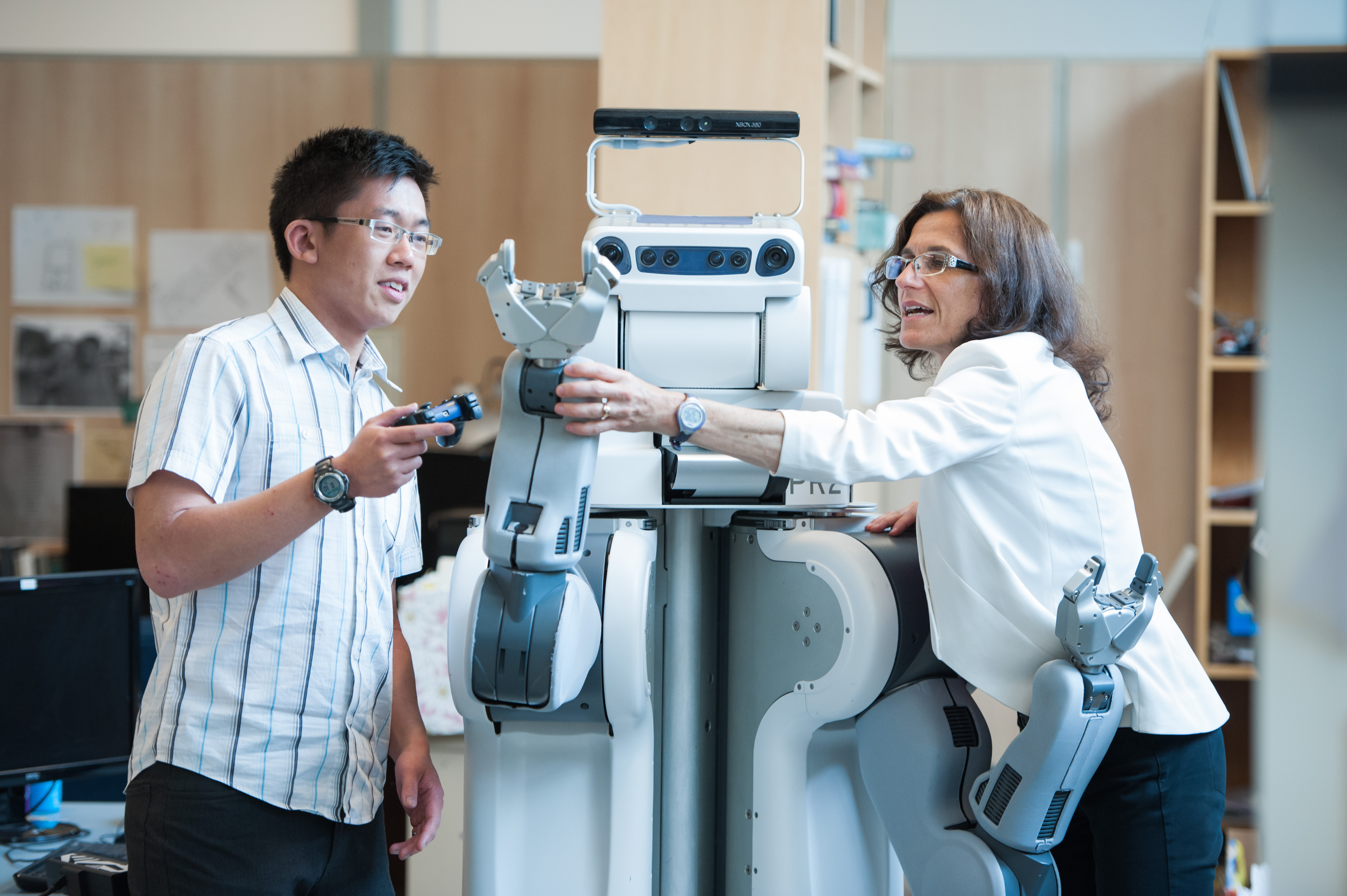Less than 100 years from now, robots will be friendly, useful participants in our homes and workplaces, predicts UBC Mechanical Engineering professor and robotics expert Dr. Elizabeth Croft. We will be living in a world of Wall-Es and Rosies, walking-and-talking avatars, smart driverless cars and automated medical assistants.
“They will be everywhere, helping us at home and at work,” she told UBC Applied Science News. “They could make you breakfast in the morning and check on your kids. They could be your front line staff, giving visitors directions and answering questions. They could be your physician’s assistant. Or you could have a robotic avatar that will attend a meeting for you while you’re traveling on the other side of the world. Future robots may be self-replicating, self-growing, and self-organizing. The natural evolution of robotics is toward incorporating biology. We can now grow cells around bio-compatible structures; this opens the door for the combination of the biological systems with embedded artificial intelligence, and eventually the cyber-physical workforce of the future.”
As we approach this future, it’s important to think about the rules of engagement between robots and humans, Croft told CFAX and News 1130 this week. Croft described her lab to News 1130 as a kind of “robot kindergarten” that teaches robots how to behave and interact. “We’re looking at how to teach robots to be responsive to [our] needs, to be able to be good partners, to interact, to share, to take turns—it’s an important part of developing personalized robotics,” she added on CFAX.
“As robots become more and more a part of our lives, the question becomes: what are the rules of the game? What is OK for robots to do, and what is not? Robots will have abilities that we don’t have, and we need to define what they are allowed to do with that capacity.
There are some big ethical questions to consider: how does society deal with drones that can kill, for example. But there are important day-to-day questions too. If a human and a robot are accessing the same resource – the same roadway, same tools, same power source, who yields? Does the person always get their way? What if the robot is doing something for the greater good, for example, a robotic ambulance?
In a way, I like to think of our lab as robot kindergarten. We are teaching robots basic, building-block behaviours and ground rules for how they interact with people: how to hand over a bottle of water, how to look for things, how to take turns. Having these basic behaviours in place allows us to create human-robot interactions that are natural and fluid.
To achieve our goals, our lab welcomes researchers from different disciplines—ethics, law, machine learning, experts in human computer interaction—as well as different international cultures. Different cultures have different ideas of robots. We learn a lot from these many perspectives.” (Croft to UBC Applied Science News)
Read the story on News 1130 here: news1130.com/2016/06/02/ubc-robot-kindergarten
Listen to the interview with CFAX here: soundcloud.com/terry-moore-cfax/may-30-5pm-1 (segment starts at 6:53)
Read more about Dr. Croft’s research here: caris.mech.ubc.ca

Dr. Elizabeth Croft and student with Charlie the robot in UBC’s CARIS lab. (Photo credit: Martin Dee)